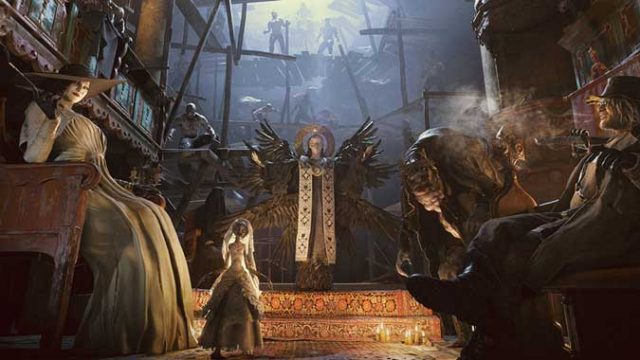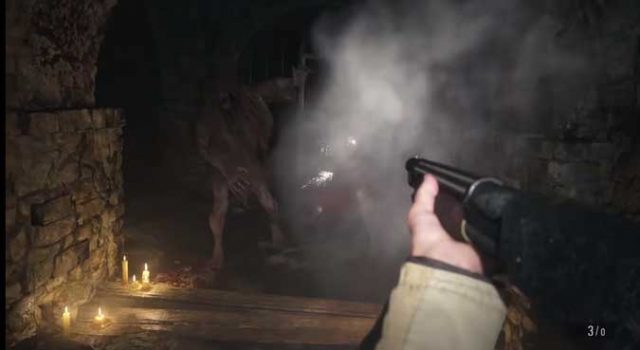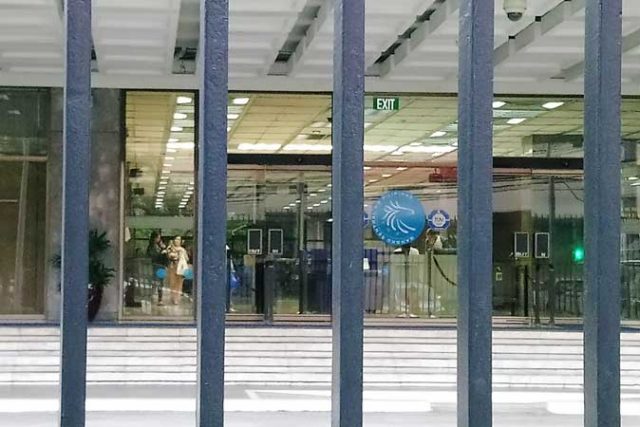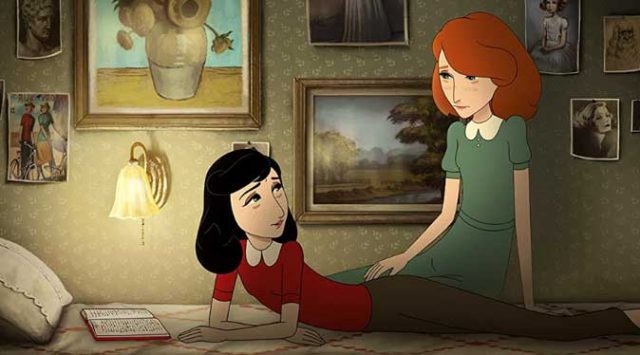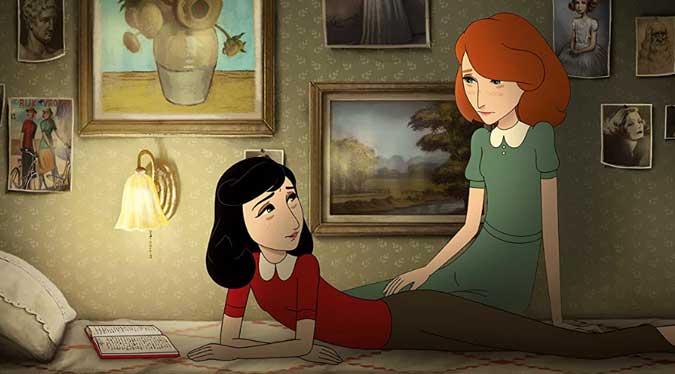Video Game Review
Resident Evil Village
Sony PlayStation 5
Guilty Gear ~Strive~
Sony PlayStation 5
THE Resident Evil series has always been enveloped by a story of evil corporations and shadowy under-the-table conspiracies. It has always dealt with the corruption of laws and public servants, showing how rampant, gross misuse of power and money corrupts, and how survival amid all the tangible and intangible horrors depends on the tools you possess and what information you have on hand. The franchise has done this spectacularly, time and time again. True, the weaker parts of the series still stick out like a proverbial sore thumb, but, overall, Capcom’s horror/action/adventure intellectual property has had a good run, and still stands strong. Even with all its perceived missteps, it continues to be among the best in its hybrid genre.
Resident Evil Village keeps the winning streak going, capitalizing on the series’ strengths while framing its plentiful action-based elements in an almost fairy-tale-like narrative that’s both unsettling and exciting. While it may not present many new ideas, it manages to churn out familiar parts with equal verve, and the distinct combination of progress and tradition results in the franchise’s latest offering having its own unique charm to fall back on. It may not reinvent the series, but it’s a Resident Evil title that will have you on the edge of your seat all the same.
In Resident Evil Village, you play as Ethan, three years after the events of the immediate past release in the series. He sees his friend shoot his wife, and his child is taken before his eyes — right as he’s knocked unconscious. When he wakes, he finds himself in a snowy village far removed from civilization. He’s alone and defenseless, trapped in a world where feral monsters, giant mutated beasts, and killer vampires roam. With just his wits and whatever weapons and items he can scavenge, he must find his bearings, find his daughter, and escape from his always-threatening surroundings before time runs out.
Resident Evil Village hums from the get-go, and, in this regard, the Resident Evil engine needs to be praised for what it is able to do. The environment is absolutely stunning, especially when combined with the game’s sound design. The sights it shows are truly a marvel, with the opening sequence having you emerge from a dark, gloomy forest to behold the areas you’ll soon explore — a ramshackle village with a foreboding castle looming in the distance. You’ll explore every nook and cranny you can get into, including paintings that adorn long hallways and blood trails in the snow. You’ll hear the distant crowing and bleating of animals in the distance, and you’ll get sucked at how good the Sony PlayStation 5 is able to render all the visuals without a hitch, even when the screen gets busy with action. While it is true that presentation doesn’t make a game great per se, there can be no discounting the positive effect it has in keeping you immersed. It makes all the exploration sequences — potential drags — engrossing, and the occasional escape-room sequences and puzzles even more compelling. In between are the quiet moments that really nail down the atmosphere in the midst of all the visceral richness, ultimately setting up some of the game’s best scares. What a blast.
The same goes for the combat sequences in Resident Evil Village. While you’ll mainly be solving puzzles and finding items to help you on your journey, you’ll find the village’s denizens far from welcoming. You’ll be forced to defend yourself against them, and the arsenal you have access to gives you plenty of options when dealing with them. You’ll use handguns, shotguns, and rifles to bring any enemies down, but you can also craft your own ammunition and improvised explosives to help you out against hordes. When they get close, you can always use Ethan’s block move to reduce incoming damage, not to mention his ability to shove them back as a way to gain some distance from your attackers and line up a new shot.
As Resident Evil Village’s story progresses, you’ll be able to access different types of guns to play with, upgrade Ethan with a variety of passive buffs to make him stronger, and even engage in some friendly bartering with the game’s merchant. Later on, you’ll gain access to better upgrades for your weapons, find secret treasures to sell, and encounter newer, more dangerous foes to beat down. And all of it just feels amazing.
For longtime Resident Evil fans, Resident Evil Village really does make use of the best parts of its predecessors. You get to see the recent Resident Evil remakes’ engine pushed to the limit. You have the slow, grim atmosphere and backtracking of the classic titles in the franchise, with vastly different areas and environments to lose yourself in. You have the first-person camera of Resident Evil 7 for that heightened, immersive experience. You have the action sequences and inventory management of Resident Evil 4, and you have the silly, over-the-top, enjoyable villains that the Resident Evil series is known for.
It all sounds like a mish-mash of ideas that has the potential to come together as an incoherent mess, but Resident Evil Village manages to pull off the brilliant combination of horror and action. The pacing is nearly perfect, moving between desperate action sequences, and quiet, tense exploration segments. Just when you’re comfortable and settling down, Resident Evil Village does its best to throw you off and keep you on your toes.
And that’s just for the main game of Resident Evil Village. Those new to the Resident Evil series will find that it takes around eight to 12 hours for a first run. More repetitions lead to efficiency, and, soon enough, the game can be finished in as fast as two to three hours. If nothing else, though, the compelling calling to improve on finish times underscores its extremely high replay value. The existence of New Game+ means you can bring your upgraded weapons to bear for some righteous comeuppance against some enemies that really pissed you off before. A mercenary mode exists to test you on your aiming skills and twitch shooting, with rewards unlocking art gallery items to view and even extra unlockable items to bring into the main game. And if that’s not enough, there’s always the Village of Shadows difficulty to test your skills, pitting you against even more aggressive enemies. It’s a lot of extra content to pore through, and one that impels you to spend more and more time on the game.
If anything in Resident Evil Village stands out as a flaw, it would have to be how certain parts of the game feel drastically different from others. For instance, the first large-scale fight you’ll have is almost unnecessarily difficult, given that you’re still unfamiliar with how enemies dart from side to side. It’s not impossible by any means, but it’s a rough learning curve that might put off the faint of heart. Additionally, the final act of Resident Evil Village is far more action-oriented than its slower, more methodical early parts, which may leave people disappointed if they were looking for more scares.
In the final analysis, most of Resident Evil Village’s supposed “flaws” aren’t down to any technical problems or core design issues. They’re just pacing issues. When you look at the bigger picture, the title offers much at the outset, and then more and more as you progress. It establishes a fresh, enjoyable story to experience. It gives a ton of content to unlock with New Game+. It provides a mercenary mode for you to lose yourself in. It boasts of a solid, holistic Resident Evil experience that shows off the franchise’s best parts. Which is to contend that it’s a must-buy for any true Resident Evil fan — or any true gaming fan, for that matter. Just a few points shy of perfection, it’s a game that you’ll thoroughly enjoy the entire way through, and one that leaves you eager for more.
THE GOOD:
* Beautiful graphics combined with solid performance and consistent framerates
* High replay value and tons of content to run through with New Game+, Mercenary Mode, and Village of Shadows option
* Plays to its strengths by combining a solid shooter with survival horror elements and creepy, dark surroundings
THE BAD
* Rough beginning that can be frustrating, especially on the harder modes
* Not enough horror segments towards the latter part of the game
RATING: 9.5/10
POSTSCRIPT: Guilty Gear is a series that has run for more than two decades, first seeing the light of day on the original Sony PlayStation way back in 1998. Back then, Guilty Gear was not the beloved series it is now; it was a nobody, and as a newcomer to the fighting game genre, it had to compete against much more popular, already established video games series like Mortal Kombat and Street Fighter. Nevertheless, even with the odds stacked against it, Arc System Works managed to create something special with its unique spin on an anime fighter, wowing its players with its stylish combos, outstanding sprites, and fast-paced gameplay.
Now, 23 years after its initial release, the Guilty Gear series seeks to channel the same energy with Guilty Gear ~Strive~. Released on Steam, PlayStation 4, and PlayStation 5, and the arcades, it brings to the table a marked focus on fast-paced combat, flashy graphics, and solid gameplay mechanics, promising an exciting, competitive experience that few other games can compete with.
The premise in Guilty Gear ~Strive~ is simple. Fight your way to the top and conquer the opposition using both style and skill. Enjoy its deep, intricate combat system, and challenge others in multiplayer mode, or lose yourself in its extensive single player storyline. Learn the combos of your favorite characters, fall in love with their gorgeous animations, and bring down your opponent’s life bar through combos, feints and hits. It’s a prime example of an outstanding two-dimensional fighting game, with Arc System Works pulling out all the stops to make sure all the bells and whistles you’d expect from the series are present.
True to the identity of the Guilty Gear series, Guilty Gear ~Strive~ retains the flashy, entertaining combos. These will be your bread and butter when dealing with your opponents, although, for longtime followers of the genre, these combos appear to be much more accessible and easier to perform, allowing for a seamless string of fancy hits and juggles. Previously, hits came with leniency, but only some could be chained, with the moves typically being slower to perform. As they were much more telegraphed, the development balances out the consistent damage output you could do. As a result, the latest iteration, gets a very nice change of pace, relying on pokes and tactics to land hits that can eventually transition to a solid combo.
Guilty Gear ~Strive~’s new system may take some getting used to, especially if you’re used to the pace of the older games, but the change lets both newcomers and veterans spar on a fairly even level, while still retaining much of the combat’s depth. Now, fancy combos are much easier to perform but much harder to land in general, relying on mind-gaming, feints, and reading your opponent’s moves and thought process. It’s surprisingly addictive when you’re facing a human player because of it, and it gives the game its solid combat flow that anyone can appreciate. With 15 fighters to play with, and all unique and different in their moves, personality, and design, it’s hard not to appreciate what Guilty Gear ~Strive~ does when it can hold your attention so well.
Guilty Gear ~Strive~ isn’t perfect, however. Notably, its single-player offering lacks the mechanical depth of player-versus-player combat. True, the Artificial Intelligence is pretty solid on its own accord, but fighting a computer won’t give you as much satisfaction as fighting a player does. While the game features some handy single player content in the form of missions and a story mode, it pales in comparison to its online multiplayer component. Its single player mode feels more like mere training ground to get used to its new mechanics.
While other fighters in the past have struggled depending on who you’re connecting to, Guilty Gear ~Strive~’s online capability is no slouch, able to match up to the monumental task of connecting players together via its solid rollback netcode. This allows for players across the globe to match each other on even footing, without having excessive lag ruin the experience.
This is the key defining factor that sets Guilty Gear ~Strive~ apart from other fighting games. It’s not just an accessible title; it’s one that excels at its primary job of bringing in some good old fashioned 2D fighting. Even for those dabbling in other titles like, say, Soul Calibur, and for those partial to the moves of such notables as Ryougi Shiki and Akiha Tohno, Guilty Gear ~Strive~ manages to captivate due to its fluid online service. Melty Blood may be fun to play with people located in the same room, but Guilty Gear ~Strive~ is fun to play with everyone, allowing you to connect with players in other countries without a trace of lag or delay.
All told, Guilty Gear ~Strive~ is the perfect game to play if you’re a fan of fighting games. Beneath its already-appealing anime aesthetic is a solid, no-nonsense fighter that excels at bringing people together. Fans of the fighting game genre should do their best to play Guilty Gear ~Strive~ while it’s still hot, especially if they’re into competitive online gameplay. While its roster of characters may be limited when compared to its contemporaries, its quality shines through in spite of the minor flaw. It looks pretty, plays great, and embodies the best of the competitive, online spirit that all fighting games find hard to capture.
THE GOOD:
* Great artstyle and designs all around
* Fast and fluid combat, paired with a strong emphasis on online competition
* Accessible and easy to learn, while still giving enough room for experimentation and mastery
THE BAD:
* Relatively low number of characters to choose from
* Single Player mode is nowhere near as strong as its online mode
* Series veterans may feel put off to the slight change in pacing that Guilty Gear ~Strive~ takes on
RATING: 9.5/10
THE LAST WORD: Ys IX: Monstrum Nox is now out on Windows systems, the Nintendo Switch, and Google Stadia. The action role-playing game is the latest release in the long-running Ys franchise from Tachikawa-based developer Nihon Falcom. Employing the same gameplay mechanics as predecessor Ys VIII: Lacrimosa of Dana, it allows gamers to switch characters on the fly, and as dictated by circumstances.
Also out from publisher Nippon Ichi Software America’s stable is The Silver Case 2425, which packages remastered versions of videogame designer Goichi Suda’s acclaimed The Silver Case and The 25th Ward: The Silver Case. The Nintendo Switch version includes two new scenarios and 12 remixed and two additional audio tracks. To contend that the two titles have made an impact on Suda’s subsequent works would be an understatement. For instance, Killer7 explored and featured similar elements by design.


